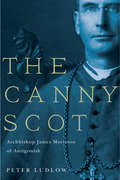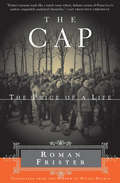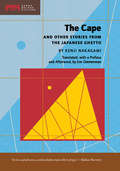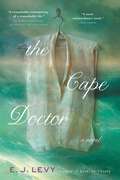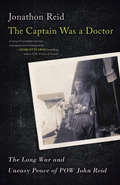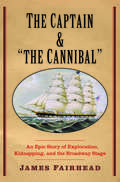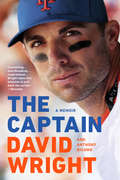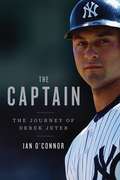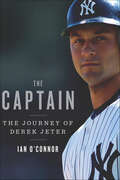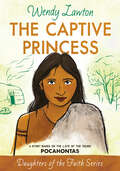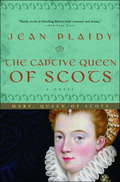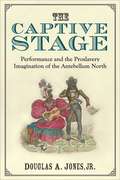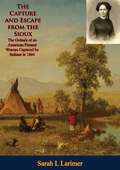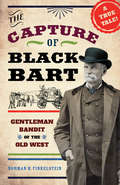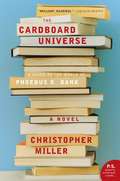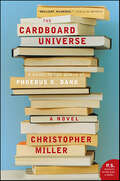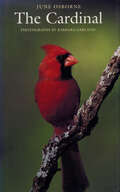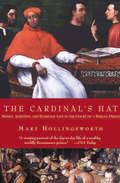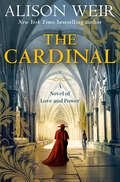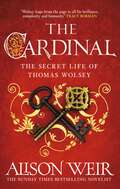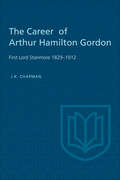- Table View
- List View
The Canny Scot: Archbishop James Morrison of Antigonish (McGill-Queen's Studies in the History of Religion #2)
by Peter LudlowA paradoxical prelate to many, Archbishop James Morrison was the spiritual head of the Roman Catholic Diocese of Antigonish, Nova Scotia, from 1912 to 1950. Traditional, frugal, and aloof, he was also the ecclesiastical leader of a progressive program of Catholic social action that became known as the "Antigonish Movement." Elevated to bishop after a successful clerical career in Prince Edward Island, Morrison guided Catholics in eastern Nova Scotia through difficult periods of economic decline, out-migration, and war. He was unprepared for the challenges of twentieth-century Canadian society, and initially struggled to cope with a dwindling Maritime economy, labour unrest, and rural depopulation. Determined to maintain the stature of his diocese, Morrison cautiously supported the clergy reformers who wanted a program of adult education and economic reform. Peter Ludlow unravels the mystery of this figure to show that although Morrison was one of the last powerful and austere Canadian Roman Catholic prelates, he was also one of the first to recognize that the Church could offer its adherents more than spiritual guidance. A revisionist account of the foundation and application of the Antigonish Movement, The Canny Scot illustrates the important role of the Catholic Church in Nova Scotia.
The Cap: The Price of a Life
by Roman FristerA Polish survivor&’s &“brutal and beautifully written&” Holocaust memoir. &“The power of his portrayal of one man&’s instinct for survival . . . cannot be denied&” (The Boston Globe). The Cap is an unconventional Holocaust memoir that defies all moral judgment and ventures into a soul blackened by the unforgiving cruelty of its surroundings. Roman Frister&’s memoir of his life before, during, and after his imprisonment in the Nazi concentration camps sparked enormous controversy and became an international bestseller. With bone-chilling candor, Frister illustrates how the impulse to live unhinges our comfortable notions of morality, blurring the boundary between victim and oppressor and leaving absolutely no room for martyrdom. By the time Roman Frister was sixteen, he had watched his mother murdered by an SS officer and he had waited for his father to expire, eager to retrieve a hidden half loaf of bread from beneath the dying man&’s cot. When confronted with certain death, he placed another inmate in harm&’s way to save himself. Frister&’s resilience and instinct for self-preservation—developed in the camps—become the source of his life&’s successes and failures. Chilling and unsentimental, The Cap is a rare and unadorned self-portrait of a man willing to show all of his scars. Reflected in stark relief are the indelible wounds of all twentieth-century European Jews. An exceptional and groundbreaking testimony, Roman Frister&’s &“gut-wrenching memoir is a must-read&” (Kirkus Reviews). &“Staggering in its honesty . . . Frister&’s courage to plumb the ambiguity of his actions . . . leaves the reader awestruck.&” —Publishers Weekly, starred review
The Cape
by Eve Zimmerman Kenji NakagamiBorn into the burakumin--Japan's class of outcasts--Kenji Nakagami depicts the lives of his people in sensual language and stark detail. The Cape is a breakthrough novella about a burakumin community, their troubled memories, and complex family histories. Includes House on Fire and Red Hair. Kenji Nakagami (1946-92) was a prolific writer admired for his vigorous prose style.
The Cape Doctor
by E. J. LevyA "gorgeous, thoughtful, heartbreaking" historical novel, The Cape Doctor is the story of one man&’s journey from penniless Irish girl to one of most celebrated and accomplished figures of his time (Lauren Fox, New York Times bestselling author of Send for Me). Beginning in Cork, Ireland, the novel recounts Jonathan Mirandus Perry&’s journey from daughter to son in order to enter medical school and provide for family, but Perry soon embraced the new-found freedom of living life as a man. From brilliant medical student in Edinburgh and London to eligible bachelor and quick-tempered physician in Cape Town, Dr. Perry thrived. When he befriended the aristocratic Cape Governor, the doctor rose to the pinnacle of society, before the two were publicly accused of a homosexual affair that scandalized the colonies and nearly cost them their lives. E. J. Levy&’s enthralling novel, inspired by the life of Dr. James Miranda Barry, brings this captivating character vividly alive.
The Captain Was a Doctor: The Long War and Uneasy Peace of POW John Reid
by Jonathon ReidA Canadian medical officer and prisoner of war returns from the Second World War a hero — and a very different man. In August 1941, John Reid, a young Canadian doctor, volunteered to join the Royal Canadian Army Medical Corps with four friends from medical school. After five weeks of officer training in Ottawa, Reid took an optional two-week course in tropical medicine, a choice which sealed his fate. Assigned to “C” Force, the two Canadian battalions sent to reinforce “semi-tropical” Hong Kong, he was among those captured when the calamitous Battle of Hong Kong ended on Christmas Day. After a year in Hong Kong prison camps, Reid was chosen as the only officer to accompany 663 Canadian POWs sent to Japan to work as slave labourers. His efforts over the next two and a half years to lead, treat, and protect his men were heroic. He survived the war, but finding a peace of his own took ten tumultuous years, with casualties of a different sort. He would never be the same.
The Captain and "the Cannibal"
by James FairheadSailing the uncharted waters of the Pacific in 1830, Captain Benjamin Morrell of Connecticut became the first outsider to encounter the inhabitants of a small island off New Guinea. The contact quickly turned violent, fatal cannons were fired, and Morrell abducted young Dako, a hostage so shocked by the white complexions of his kidnappers that he believed he had been captured by the dead. This gripping book unveils for the first time the strange odyssey the two men shared in ensuing years. The account is uniquely told, as much from the captive's perspective as from the American's. Upon returning to New York, Morrell exhibited Dako as a "cannibal" in wildly popular shows performed on Broadway and along the east coast. The proceeds helped fund a return voyage to the South Pacific--the captain hoping to establish trade with Dako's assistance, and Dako seizing his only chance to return home to his unmapped island. Supported by rich, newly found archives, this wide-ranging volume traces the voyage to its extraordinary ends and en route decrypts Morrell's ambiguous character, the mythic qualities of Dako's life, and the two men's infusion into American literature--Dako inspired Melville's Queequeg, for example. The encounters confound indigenous peoples and Americans alike as both puzzle over what it is to be truly human and alive.
The Captain: A Memoir
by David Wright Anthony DiComoThe memoir from the last Mets captain, David Wright, one of the most admired players in recent MLB history, about his inspiring and deep commitment to the game. David Wright played his entire fourteen-year Major League Baseball career for the New York Mets. And when he came back time and again from injury, he demonstrated the power of hard work, commitment, and love of the game. Wright was nicknamed "Captain America" after his performance in the 2013 World Baseball Classic. He is a seven-time All-Star, a two-time Gold Glove Award winner, a two-time Silver Slugger Award winner, and a member of the 30-30 club. He holds Mets franchise records for most career RBIs, doubles, total bases, runs scored, walks, sacrifice flies, times on base, extra base hits, strikeouts, double plays, and hits. He was named captain of the Mets in 2013, becoming the fourth captain in the team's history. Now the widely admired, beloved New York Mets third baseman and captain tells it from his perspective.
The Captain: The Journey of Derek Jeter
by Ian O'ConnorEvery spring, Little Leaguers across the country mimic his stance and squabble over the right to wear his number, 2, the next number to be retired by the world's most famous ball team. Derek Jeter is their hero. He walks in the footsteps of Ruth, Gehrig, DiMaggio, and Mantle, and someday his shadow will loom just as large. Yet he has never been the best player in baseball. In fact, he hasn't always been the best player on his team. But his intangible grace and Jordanesque ability to play big in the biggest of postseason moments make him the face of the modern Yankee dynasty, and of America's game. In The Captain, best-selling author Ian O'Connor draws on extensive reporting and unique access to Jeter that has spanned some fifteen years to reveal how a biracial kid from Michigan became New York's most beloved sports figure and the enduring symbol of the steroid-free athlete. O'Connor takes us behind the scenes of a legendary baseball life and career, from Jeter's early struggles in the minor leagues, when homesickness and errors in the field threatened a stillborn career, to his heady days as a Yankee superstar and prince of the city who squired some of the world's most beautiful women, to his tense battles with former best friend A-Rod. We also witness Jeter struggling to come to terms with his declining skills and the declining favor of the only organization he ever wanted to play for, leading to a contentious contract negotiation with the Yankees that left people wondering if Jeter might end his career in a uniform without pinstripes. Derek Jeter's march toward the Hall of Fame has been dignified and certain, but behind that leadership and hero's grace there are hidden struggles and complexities that have never been explored, until now. As Jeter closes in on 3,000 hits, a number no Yankee has ever touched, The Captain offers an incisive, exhilarating, and revealing new look at one of the game's greatest players in the gloaming of his career.
The Captain: The Journey of Derek Jeter
by Ian O'ConnorNEW YORK TIMES BESTSELLER“Derek Jeter is undoubtedly the most talked about, argued about, cheered, booed and ultimately respected baseball player of his generation. And as public a figure as he has been, he is in many ways the least known. That changes now as Ian O’Connor, one of the best sports writers anywhere, goes deep and does what no one has quite been able to do: Tell us a bit about who Derek Jeter really is.”—Joe Posnanski, author of The Machine"Deftly told.”—The Washington Post In The Captain, Ian O’Connor draws on unique access to Derek Jeter and more than 200 new interviews to reveal how a biracial kid from Michigan became New York’s most beloved sports figure and the face of the steroid-free athlete. O’Connor takes us behind the scenes of a legendary baseball life, from Jeter’s early struggles in the minor leagues, when homesickness and errors threatened a stillborn career, to the heady days of Yankee superiority and nightlife, to the battles with former best friend A-Rod. All along the way, Jeter has made his Hall-of-Fame destiny look easy. But behind that leadership and hero’s grace there are hidden struggles and complexities that have never been explored, until now.
The Captive Princess: A Story Based on the Life of Young Pocahontas (Daughters of the Faith Series)
by Wendy LawtonDaughters of the Faith: Ordinary Girls Who Lived Extraordinary Lives.On the eastern shores of the North American wilderness lives an Algonquin princess named Pocahontas, a curious 10-year-old who loves exploring the tidewater lands of her people. One day she encounters strangers, a group of people who look different from her own. She befriends them, and when her people come into conflict with these new settlers, Pocahontas courageously attempts to save a life by offering her own. Based on the true story of Pocahontas&’ early life.
The Captive Princess: A Story Based on the Life of Young Pocahontas (Daughters of the Faith Series)
by Wendy LawtonDaughters of the Faith: Ordinary Girls Who Lived Extraordinary Lives.On the eastern shores of the North American wilderness lives an Algonquin princess named Pocahontas, a curious 10-year-old who loves exploring the tidewater lands of her people. One day she encounters strangers, a group of people who look different from her own. She befriends them, and when her people come into conflict with these new settlers, Pocahontas courageously attempts to save a life by offering her own. Based on the true story of Pocahontas&’ early life.
The Captive Queen of Scots: Mary, Queen of Scots (Mary Stuart, Queen of Scots #2)
by Jean Plaidy"Burn the murderess!" So begins Jean Plaidy's The Captive Queen of Scots, the epic tale of the Scottish Queen Mary Stuart, cousin to Queen Elizabeth of England. After her husband, Lord Darnley, is murdered, suspicion falls on Mary and her lover, the Earl of Bothwell. A Catholic in a land of stern Protestants, Mary finds herself in the middle of a revolt, as her bloodthirsty subjects call for her arrest and execution. In disgrace, she flees her Scottish persecutors for England, where she appeals to Queen Elizabeth for mercy, but to no avail. Throughout Mary's long years as the Queen's prisoner, she conceives many bold plans for revenge and escaping to freedom--but the gallows of Fotheringhay Castle loom . . . Set against royal pageantry, religious strife, and bloody uprising--and filled with conspiracies, passion, heartbreak, and fascinating historical detail--The Captive Queen of Scotsis an unforgettable, page-turning tale of the intense rivalry between two powerful women of noble blood.
The Captive Stage: Performance And The Proslavery Imagination Of The Antebellum North
by Douglas A. JonesIn The Captive Stage, Douglas A. Jones, Jr. argues that proslavery ideology remained the dominant mode of racial thought in the antebellum north, even though chattel slavery had virtually disappeared from the region by the turn of the nineteenth century--and that northerners cultivated their proslavery imagination most forcefully in their performance practices. Jones explores how multiple constituencies, ranging from early national artisans and Jacksonian wage laborers to patrician elites and bourgeois social reformers, used the stage to appropriate and refashion defenses of black bondage as means to affirm their varying and often conflicting economic, political, and social objectives. Joining performance studies with literary criticism and cultural theory, he uncovers the proslavery conceptions animating a wide array of performance texts and practices, such as the "Bobalition" series of broadsides, blackface minstrelsy, stagings of the American Revolution, reform melodrama, and abolitionist discourse. Taken together, he suggests, these works did not amount to a call for the re-enslavement of African Americans but, rather, justifications for everyday and state-sanctioned racial inequities in their post-slavery society. Throughout, The Captive Stage elucidates how the proslavery imagination of the free north emerged in direct opposition to the inclusionary claims black publics enacted in their own performance cultures. In doing so, the book offers fresh contexts and readings of several forms of black cultural production, including early black nationalist parades, slave dance, the historiography of the revolutionary era, the oratory of radical abolitionists and the black convention movement, and the autobiographical and dramatic work of ex-slave William Wells Brown.
The Captive Witch
by Dale Van EveryDale Van Every’s soaring adventure saga of the untamed Kentucky wilderness, a savage woman and the young frontiersman who set out to conquer them both…They weathered the brutal winter of ‘79 in an isolated cave deep in the Kentucky wilderness: Adam Frane, backwoodsman, rifleman, soldier; and Nita, the proud, passionate woman who had rejected her civilized past for the life of a Cherokee squaw. They shred that cruel season knowing that, when the thaws came, Adam would return to Trace’s Landing and to Cynthia, the faithful young widow who waited for him there; knowing, too, that Nita would try to keep him—with all the savage passion that had earned her the name…One of Dale Van Every’s most exciting historical novels…filled with the raw emotions and rich adventures of America’s untamed past…“Fascinating, vivid, real!”—The New York Times
The Capture and Escape from the Sioux: The Ordeals of an American Pioneer Woman Captured by Indians in 1864
by Sarah L Larimer“A famous account of abduction and escape from hostile Indians in the old West.In July, 1864 hostile Oglala Sioux Indians attacked the wagon train of the pioneering Kelly and Larimer families approximately 80 miles west of Fort Laramie, Wyoming. Several people were killed or wounded but Sarah Larimer and Fanny Kelly, together with some of their children, were taken into captivity by the Indians. On the second night of their captivity Sarah Larimer and her son managed to escape from the Indian camp and after many difficulties and privations they reached the Deer Creek telegraph station and safety. This book is Sarah Larimer’s story of her ordeal. Fanny Kelly’s captivity with the Sioux lasted longer and on her release she also wrote a book about her experiences. She also sued Sarah Larimer over her memoir and several trials took place over ten years before the matter was settled. [This Book] provides fascinating insights into the westward passage of pioneer families in North America, and those interested in the Indian tribes of the Great Plains during their struggle to maintain their traditional way of life will also find much to interest them in the pages of these books.”-Print ed.
The Capture of Black Bart: Gentleman Bandit of the Old West
by Norman H. FinkelsteinBlack Bart was not the Old West’s only stagecoach robber, but he quickly became the most famous. To many people, he was a folk hero, a robber who didn’t threaten or harm passengers. He was a bandit with a sense of humor who wrote poetry. In robbing at least 28 Wells Fargo stagecoaches across northern California between 1875 and 1883, he never fired a shot or injured anyone. His gun, it turned out, was never loaded. Newspaper stories about the poet robber’s exploits and about Jim Hume,the unyielding chief detective of Wells Fargo, became popular reading throughout the West. Black Bart seemed to enjoy the chase. During one robbery the driver told him “They’ll catch you one of these days.” Bart answered, “Perhaps, but in the meantime give my regards to J. B. Hume, will you?” For eight years, each new robbery—and each new story—made Hume even more determined to track him down. Resources include a list of all Bart’s robberies, notes, and bibliography, making this a rich resource for all Wild West readers.
The Car, The Sled, and The Butch Wax
by Marc MaurerIn this book, successful people (who happen to be blind) tell stories which illustrate coping strategies while amusing the reader. Young adults will find courage in these true sharings. Can a person who is blind really do almost anything by using alternate techniques? What are those techniques? These eight people share a few of them. When a student teacher is faced with schoolchildren who have a sledding day planned, will a white cane be enough? Can a man without sight possibly rebuild a car's engine? When a young girl tests butch wax on her long tresses, does her hair ever return to its normal state? Whose fault is it when a person who is blind opens a taxicab door onto the side of a shiny, new SUV? These experiences delight, challenge and inform. This file should make an excellent embossed braille copy.
The Cardboard Universe: A Guide to the World of Phoebus K. Dank
by Christopher MillerIn this uproarious novel, Christopher Miller pulls back the curtain on two unforgettable critics--fawning scholar William Boswell (the world's leading Dankian) and his mortal enemy, the murderously snarky Owen Hirt. No stone is left unturned--and no gooey mess unstepped in--in this essential study of Dank's all-too-brief existence and all-too-extensive oeuvre.
The Cardboard Universe: A Guide to the World of Phoebus K. Dank
by Christopher MillerGenius or fraud? Hack or Hemingway? The life and work of obese, obsessive, logorrheic pulp novelist Phoebus K. Dank have long enflamed bitter controversy—and numerous drunken rants often culminating in vomiting, unconsciousness, or both. In this uproarious novel, Christopher Miller pulls back the curtain on two unforgettable critics—fawning scholar William Boswell (the world's leading Dankian) and his mortal enemy, the murderously snarky Owen Hirt. No stone is left unturned—and no gooey mess unstepped in—in this essential study of Dank's all-too-brief existence and all-too-extensive oeuvre.
The Cardinal (Corrie Herring Hooks Series)
by June OsborneIn this inviting guide, June Osborne and Barbara Garland follow a year in the life of the Northern Cardinal with a fact-filled text and glowing color photographs. They describe how cardinals stake out territory and choose mates, find a nesting site and incubate their eggs, feed the young and prepare them for full-fledged independence. The Cardinal also explores the special relationship that humans have with their favorite redbirds. Osborne traces the symbolic use of cardinals as state birds (Illinois, Indiana, Kentucky, North Carolina, Ohio, Virginia, and West Virginia) and athletic mascots and shows how they appear on everything from postage stamps to Christmas cards, as well as in fine art, literature, and Native American folklore.
The Cardinal's Hat: Money, Ambition, and Everyday Life in the Court of a Borgia Prince
by Mary Hollingsworth&“A riveting portrait of the day-to-day life of a wealthy, worldly Renaissance prince&” as he pursues power and influence in the Catholic church (USA Today). The second son of Alfonso d&’Este and Lucretia Borgia, the Duke and Duchess of Ferrara, Ippolito d&’Este was made the archbishop of Milan at the age of nine. But from the time of his father&’s death in 1534, he set his ambitions on acquiring the powerful and coveted cardinal&’s hat. But one did not become a sixteenth century prince of the church through piety and good works. Ippolito had a taste for gambling and women. He enjoyed hunting in the Loir valley and pursued his ambition with money, schmoozing, and the dark arts of politics. Working with Ippolito&’s letters and ledgers, recently uncovered in an archive in Modena, Italy, Mary Hollingsworth has pieced together a fascinating and undeniably titillating tale of this Renaissance cardinal and his road to power and wealth in sixteenth century Europe. The ledgers document every aspect of Ippolito&’s comings, goings, purchases, and debts. Out of these finely detailed records, Hollingsworth brings to life not only Ippolito, but his world. &“In this brilliant piece of historical detective work and narrative reconstruction . . . the most unlikely bits and pieces—a scrap of velvet, a stray barrel of wine—can be made to tell stories that resonate far beyond the neat columns of a well-kept account book.&” —The Guardian
The Cardinal: A Novel of Love and Power
by Alison WeirIn this &“immersive tale of Tudor intrigue&” (Publishers Weekly), the New York Times bestselling author of The Last White Rose explores the rise of Thomas Wolsey, who was Henry VIII&’s chief adviser—until the king accused him of treason.&“Henry VIII&’s beloved cardinal leaps from the page in all his brilliance, complexity, and humanity. Fans of Wolf Hall have a treat in store.&”—Tracy Borman, author of Anne Boleyn & Elizabeth ICardinal Thomas Wolsey enjoyed one of the most meteoric careers in history. His rise from humble beginnings coincided with young Henry VIII&’s ascension to the throne in 1509. The two grew to be cherished friends, and by 1515 Wolsey, now a cardinal, had become the controlling figure in all matters of church and state.Wolsey operated on an international stage and worked hard to broker universal peace. All was going dazzlingly well until Henry fell in love with Anne Boleyn—the woman whom Wolsey would one day call &“the night crow&”—and sought to end his marriage to his first wife, Katherine of Aragon. Swept up in the maelstrom of &“the Divorce,&” Wolsey, who had successfully given his master everything he wanted, found himself in an impossible situation. As he drew the ire of the future queen, the cardinal found his privileged life and his relationship with Henry crumbling around him.Alison Weir&’s poignant novel tells the story of Wolsey the man—his incredible rise to power and his tragic fall. She delves beyond the splendor and political machinations of the Tudor court to reveal the secrets of Wolsey&’s private life, the mistress and children he was devoted to, and the tragedy that overtook them. It is a tale of two women, one who loved him and one who hated him—and also a tale of two men, king and commoner, the special, deep-rooted bonds that brought them together and the forces that drove them apart.
The Cardinal: from the Sunday Times bestseller, the gripping new novel about the man behind the Tudor crown
by Alison WeirStep into the thrill and intrigue of Tudor England in the rich, compelling new novel from Sunday Times bestseller Alison Weir.'Alison Weir makes history come alive as no one else' BARBARA ERSKINEAN EXTRAORDINARY RISE TO POWER. A TRAGIC FALL FROM GRACE.It begins with young Tom Wolsey, the bright and brilliant son of a Suffolk tradesman, sent to study at Oxford at just eleven years old.It ends with a disgraced cardinal, cast from the King's side and estranged from the woman he loves.The years in between tell the story of a scholar and a lover, a father and a priest. From the court of Henry VIII, Tom builds a powerful empire of church and state. At home in London, away from prying eyes, he finds joy in a secret second life.But when King Henry, his cherished friend, demands the ultimate sacrifice, what will Wolsey choose?Alison Weir's riveting new Tudor novel reveals the two lives of Cardinal Wolsey, a tale of power, passion and ambition.PRAISE FOR ALISON WEIR'S TUDOR FICTION'Alison Weir gives us her most compelling heroine yet... This is where the story of the Tudors begins' TRACY BORMAN'History has the best stories and they should all be told like this' CONN IGGULDEN'As always, Alison Weir is ahead of the curve - and at the top of her game' SARAH GRISTWOOD'Weir is excellent on the little details that bring a world to life' GUARDIAN'Profoundly moving... lingers long after the last page' ELIZABETH FREMANTLE
The Cardinal: from the Sunday Times bestseller, the gripping new novel about the man behind the Tudor crown
by Alison WeirStep into the thrill and intrigue of Tudor England in the rich, compelling new novel from Sunday Times bestseller Alison Weir.'Alison Weir makes history come alive as no one else' BARBARA ERSKINEAN EXTRAORDINARY RISE TO POWER. A TRAGIC FALL FROM GRACE.It begins with young Tom Wolsey, the bright and brilliant son of a Suffolk tradesman, sent to study at Oxford at just eleven years old.It ends with a disgraced cardinal, cast from the King's side and estranged from the woman he loves.The years in between tell the story of a scholar and a lover, a father and a priest. From the court of Henry VIII, Tom builds a powerful empire of church and state. At home in London, away from prying eyes, he finds joy in a secret second life.But when King Henry, his cherished friend, demands the ultimate sacrifice, what will Wolsey choose?Alison Weir's riveting new Tudor novel reveals the two lives of Cardinal Wolsey, a tale of power, passion and ambition.PRAISE FOR ALISON WEIR'S TUDOR FICTION'Alison Weir gives us her most compelling heroine yet... This is where the story of the Tudors begins' TRACY BORMAN'History has the best stories and they should all be told like this' CONN IGGULDEN'As always, Alison Weir is ahead of the curve - and at the top of her game' SARAH GRISTWOOD'Weir is excellent on the little details that bring a world to life' GUARDIAN'Profoundly moving... lingers long after the last page' ELIZABETH FREMANTLE
The Career of Arthur Hamilton Gordon: First Lord Stanmore 1829-1912
by J. K. ChapmanThis close examination of Sir Arthur Gordon's six governorships (New Brunswick, Trinidad, Mauritius, Fiji, New Zealand, and Ceylon) and his administration of the Western Pacific High Commission should help fill the need for a more accurate assessment of the role of the colonial governor in the governing process than the paucity of biographies of these governors has previously made possible. <P><P>It demonstrates the revolutionary impact that an inventive and determined governor of proconsular proclivities could have upon Crown colonies, and the sense of frustration and of wasted talent which might be experienced by such a man in self-governing colonies.
